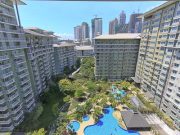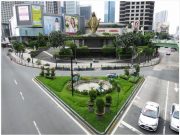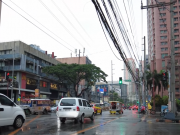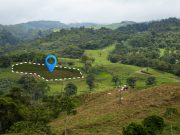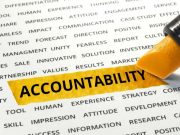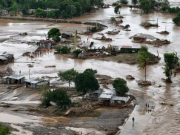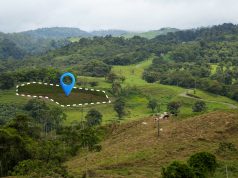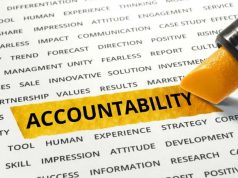This collaborative article with Ms. Sheila Viesca, Ph.D., of TalkShop, is a comprehensive series exploring the leading developers in the real estate industry. It focuses on the achievements and innovations of these developers, shedding light on their contributions to the real estate industry in the Philippines. Welcome to the introduction of this comprehensive feature.
| Part 1 – Ayala Land, Inc. | Part 2 – Century Properties Group, Inc. |
The Movers and Shakers in the World of Real Estate in the Philippines: Introduction
The real estate industry has experienced a massive surge in popularity over the past decades, with many individuals and companies investing heavily in it for business and personal reasons. The competitive nature of this industry means that only the most innovative companies stand out – this is why we are focusing on some of the biggest names in real estate development in the Philippines today. These top developers continue to dominate the market and drive innovation.
I. The exciting world of building and creating spaces.
The real estate development sector in the Philippines has seen incredible growth in recent years. With urbanization and economic progress, the demand for residential, commercial, and industrial spaces has skyrocketed. This article aims to uncover the top real estate developers in the Philippines, their notable projects, and how they’ve shaped the country’s landscape. Let’s discover some astounding real estate achievements.
A. Real estate development at a glance.
Real estate development involves various activities, including acquiring, planning, designing, constructing, and managing properties. It’s a process that encompasses land acquisition, zoning compliance, architectural design, infrastructure development, and marketing.
B. Real estate industry: Why it matters!
Playing a crucial role in the country’s economic growth, the real estate industry in the country generates employment opportunities, attracts investments, and contributes to urban development. Additionally, it addresses the housing needs of the growing population, enhances infrastructure, and stimulates various ancillary industries.
C. Exciting times are ahead of the real estate market today.
Our country’s real estate market is incredibly vibrant and diverse. It covers residential, commercial, industrial, and leisure segments, driven by population growth, urbanization, infrastructure development, tourism, and foreign investments.
II. Tips for Assessing Leading Real Estate Developers
When assessing top real estate developers, consider various criteria for a comprehensive evaluation. These criteria include market presence and portfolio size; financial performance and stability; track record and reputation; and innovation and sustainability practices.
In exploring these factors, stakeholders, investors, and industry observers can gather valuable insights into developers’ achievements and strengths. It helps them make informed decisions and understand the dynamics of the real estate landscape. Let’s unlock the potential together.
A. Market Presence and Portfolio Size
When checking out the leading real estate developers in the Philippines, it’s a good idea to consider their market presence and portfolio size. These factors give you insight into their success and influence in the industry, highlighting how they acquire and develop properties for different market segments.
1. Market Presence:
a. Geographic coverage
Examine the developer’s existence across different regions or cities in the Philippines. A widespread presence indicates their ability to tap into various markets and cater to distinct clients. See how they can connect with diverse communities and meet their unique requirements.
b. Market share
Evaluate the developer’s market share in specific sectors, such as residential, commercial, or industrial. A significant market share reflects their competitiveness and market acceptance.
2. Portfolio Size:
a. Residential projects
Consider the number and scale of residential projects developed by the company, including condominiums, townhouses, and housing subdivisions.
b. Commercial and retail projects
Assess the developer’s portfolio of commercial and retail spaces, such as office buildings, shopping malls, and mixed-use developments.
c. Industrial and logistics projects
Gauge the developer’s involvement in industrial parks, warehouses, and logistics facilities, showcasing their diversification and adaptability.
B. Financial Performance and Stability
Real estate developers’ financial performance and stability are vital in evaluating their sustainability and capacity to navigate market fluctuations. It’s crucial to assess these aspects to make informed decisions.
by net income (in billion Philippine pesos)
1. Revenue and profit growth:
Analyzing revenue and profit trends helps evaluate a developer’s financial stability and growth. Historical data provides insights into its evolution and prospects, enabling informed decisions. Gain valuable insights into financial performance and influencing factors.
2. Asset base:
Evaluate the total value of the developer’s assets, including land holdings, completed projects, and ongoing developments. An impressive asset base indicates financial strength and potential for future growth.
3. Debt management:
Assess the company’s debt-to-equity ratio and ability to manage debt effectively. A healthy debt profile indicates financial prudence and reduced risk exposure.
C. Track Record and Reputation
A real estate developer’s track record and reputation provide insights into their experience, reliability, and trustworthiness.
1. Project delivery:
Evaluate the developer’s track record in completing projects within the agreed timeline and quality standards. Timely delivery showcases their project management capabilities and reliability.
2. Customer satisfaction:
Consider customer feedback, testimonials, and reviews to assess the developer’s commitment to customer satisfaction and after-sales service.
3. Partnerships:
Review the developer’s collaborations with reputable architects, contractors, and consultants, casting their ability to form solid partnerships and deliver exceptional results.
D. Innovation and Sustainability Practices
Responsible real estate development hinges on the values of innovation and sustainability. These principles wield a powerful influence not only on the environment but also on the well-being of communities.
1. Design and technology:
Evaluate the developer’s successful adoption and utilization of innovative architectural designs, advanced construction techniques, and cutting-edge building technologies. Highlights the commitment to staying at the forefront of the industry’s evolution.
2. Environmental sustainability:
Assess the developer’s commitment to sustainable practices such as green building certifications, energy efficiency, water conservation, and waste management.
3. Social responsibility:
Consider the developer’s engagement in corporate social responsibility initiatives, community development, and inclusive design practices that benefit local communities and stakeholders.
By considering these criteria, investors, homebuyers, and industry experts can assess and recognize the top real estate developers in the Philippines based on their market presence, financial performance, track record, and commitment to innovation and sustainability.
III. Factors Influencing Real Estate Development
A. Economic Conditions and Market Trends
Economic conditions and market trends play a significant role in real estate development in the Philippines. Factors such as GDP growth, inflation rates, employment rates, and consumer spending power impact the demand for real estate.
When the economy thrives, there is an increased demand for residential, commercial, and industrial properties. Developers closely monitor market trends, including property price movements, rental rates, and supply-demand dynamics, to make informed decisions and adapt their strategies accordingly.
B. Government Policies and Regulations
Government policies and regulations greatly influence real estate development in the country. Policies related to land use, zoning, taxation, and foreign ownership impact the feasibility and profitability of real estate projects. The government’s urban planning initiatives, housing programs, and infrastructure development plans also shape the direction of the real estate industry. Developers must comply with building codes, environmental regulations, and other legal requirements set by government agencies to ensure their projects are within the established standards.
C. Infrastructure Development
Infrastructure development is vital in real estate development. The availability and quality of infrastructure, such as roads, bridges, airports, seaports, and public transportation systems, significantly impact the attractiveness and accessibility of a location. Improved infrastructure enhances the value of real estate properties and opens up new areas for development. Infrastructure projects, such as the construction of highways, railways, and airports, can spur economic growth and create opportunities for real estate developers.
D. Demographic Factors
Demographic factors, including population growth, urbanization, and changes in lifestyle and preferences, significantly influence real estate development. The increasing population drives the demand for housing, while urbanization leads to the development of mixed-use projects and the revitalization of urban areas. Developers should consider factors such as age distribution, income levels, household sizes, and housing preferences to cater to evolving needs and demands of different market segments. Demographic shifts, such as the rise of the millennial generation and changing family structures, also impact the design and features of residential developments.
Understanding and adapting to these factors is essential for real estate developers in the Philippines. Analyze economic conditions, stay updated on government policies, assess infrastructure development plans, and consider demographic trends to make informed decisions and create successful real estate projects.
IV. Challenges and Opportunities in the Real Estate Development Sector
A. Housing Affordability and Backlog
One of the critical challenges in the real estate development sector is housing affordability and the existing backlog. The demand for affordable housing far exceeds the supply, especially in urban areas. Developers face the challenge of addressing the housing needs of low- to middle-income segments while maintaining profitability. Opportunities lie in developing innovative solutions, such as socialized housing programs, flexible financing options, and partnerships with government agencies or non-profit organizations to provide affordable housing for a broader range of buyers.
B. Sustainable Development and Environmental Concerns
Real estate developers face balancing development with sustainable practices and addressing environmental concerns. There is a growing emphasis on green building certifications, energy efficiency, waste management, and utilizing environmentally friendly materials. Adapting to sustainable development practices helps mitigate environmental impact and enhances projects’ appeal to environmentally conscious buyers. Developers are endowed to embrace sustainable design principles, incorporate renewable energy sources, and create ecologically friendly communities that promote a greener and healthier living environment.
C. Technological Advancements and Smart Cities
Technological advancements present challenges and opportunities for the real estate development sector. Developers need to stay updated with emerging technologies and incorporate them into their projects to meet the changing demands of buyers. Smart cities and buildings are becoming the future of urban development, with features like sustainable infrastructure, IoT-enabled systems, and digital connectivity. Embracing these advancements can enhance operational efficiency, improve quality of life, and create connected and sustainable communities.
D. Potential Growth Areas and Untapped Markets
Identifying potential growth areas and untapped markets is crucial for real estate developers seeking new opportunities. With urbanization and economic development, emerging cities and regions offer the potential for expansion. Developers can explore locations with infrastructure development plans, tourism potential, or areas with growing industries. Additionally, niche markets such as senior housing, co-living spaces, and mixed-use developments tailored to specific demographics present untapped opportunities for innovative projects.
Addressing these challenges and seizing the opportunities requires real estate developers to be adaptable, creative, and socially responsible. By considering housing affordability, embracing sustainable practices, leveraging technology, and identifying growth areas, developers can navigate the evolving landscape and contribute to the growth and sustainability of the real estate development sector.



